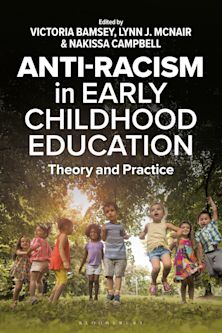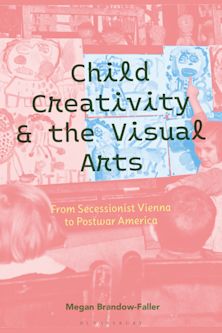- Home
- ACADEMIC
- Education
- Early Childhood Education
- Early Childhood and Neuroscience
Early Childhood and Neuroscience
Theory, Research and Implications for Practice
- Textbook
Early Childhood and Neuroscience
Theory, Research and Implications for Practice
- Textbook
Inspection copy added to basket
Choose your preferred format. If you would prefer an ebook and it is not displayed below, please visit our inspection copies page.
Please note ebook inspection copies are fulfilled by VitalSource™.
Buy from Bloomsbury eTextBooks
You are now leaving the Bloomsbury Publishing website. Your eBook purchase will be with our partner https://www.vitalsource.com.
Your credit card statement will show this purchase originating from VitalSource Technologies. They will also provide any technical assistance you might require.
You must sign in to add this item to your wishlist. Please sign in or create an account
Description
Early Childhood and Neuroscience is a practical guide to understanding the complex and challenging subject of neuroscience and its use (and misapplication) in early childhood policy and practice. The 2nd edition has been updated throughout and includes a new Foreword by Dr Laura Jana (Penn State University, USA), a new Introduction and three new chapters on:
- the effects of childhood trauma
- self-regulation
- neurodiversity
The book provides a balanced overview of the debates by weaving discussion on the opportunities of using neuroscience in early childhood practice with examination of the limitations and ethical implications throughout the chapters. This enables students to inform their own opinions about the discipline and its use in their future practice. Clear explanations of the main terms and theories are complemented with illustrative case studies of cutting-edge research from around the world, a glossary of key terms and suggestions for further reading. Reflective discussion questions give readers the chance to apply their theoretical knowledge to real-world contexts.
Table of Contents
Foreword, Laura Jana (Pennsylvania State University, USA)
Introduction
1. Neuroscience: What is it?
2. Why Should Early Childhood Practitioners Know About Neuroscience?
3. Emotional Wellbeing: How Can We Help to Build Healthy Brains?
4. What Happens in Childhood Does Not Stay in Childhood: The Lasting Legacy of Early Childhood Trauma
5. Self-Regulation: The Key to Developing Positive Adaptive Behaviours across the Life Trajectory
6. Children's Language and Communication Development: What Can Neuroscience Tell Us?
7. Neurodiversity: The Wonders of the Beautiful Brain
8. Beyond Nature Versus Nurture: Is Neuroscience Relevant to the Debate?
9. Conclusions and Recommendations: Where Do We Go from Here?
Glossary of Terms
Bibliography
Index
Product details

| Published | 02 Dec 2021 |
|---|---|
| Format | Ebook (PDF) |
| Edition | 2nd |
| Extent | 368 |
| ISBN | 9781350176461 |
| Imprint | Bloomsbury Academic |
| Illustrations | 13 bw illus |
| Publisher | Bloomsbury Publishing |
About the contributors
Reviews
-
This practical guide translates the complex subject of neuroscience ... and distils its implications for practice.
Nursery World (of the first edition)
-
I especially enjoyed the myth-busting sections found throughout the book. I thought this was an excellent addition for readers without a neuroscience background ... I think Early Childhood and Neuroscience offers an excellent summary of a variety of topics for a wide range of readers.
The Psychologist (of the first edition)
-
A FABULOUS addition to my bookshelf. I've recommended to all my students (who are scrambling to buy a copy). A long overdue look at childhood from an evidence-based neuroscience perspective, no pseudoscience, no hype, AND an enjoyable read. [Mine Conkbayir is] my new hero!
Sarah McKay, founder of The Neuroscience Academy, Australia (of the first edition)
-
The neuroscience of early childhood development is advancing with unprecedented speed, and early childhood caretakers and educators need a source to support them in understanding and distilling the new findings into usable knowledge for practice. Conkbayir's readable book nicely accomplishes this goal. It will be a handy addition to educators' toolkits.
Mary Helen Immordino-Yang, Associate Professor of Education, Psychology and Neuroscience, Brain and Creativity Institute, Rossier School of Education, University of Southern California, USA (of the first edition)



































